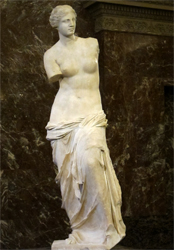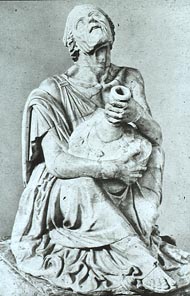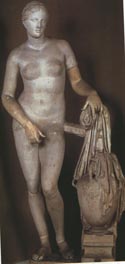
|

|
| Map of the territories conquered by Alexander
the Great (356-323 B.C.) |
In the manner of Lysippos, Head of Alexander
the Great. |
|

Silver coin of Alexander the Great with a lion's pelt, identifying Alexander as being like Heracles.
|

|
|
| Portrait head from Delos, c. 80 B.C. |
|

|

|
| Aphrodite of Melos (Venus de Milo), c.
150-100 B.C. 360 degree view of the Aphrodite of Melos. |
Old Market Woman, 2nd c. B.C. |
|

|
| Multiple views of the Aphrodite of Melos. |
Praxiteles, Aphrodite of Knidos, c. 350
B.C. (Roman copy of Greek original) |
|

|
| Detail of the Aphrodite of Knidos. |
Detail of the Aphrodite of Melos. |
| |
|
| |
Lysippos, Apoxyomenos, c. 330 B.C. (Roman
copy of Greek original) |

|

|
| Nike of Samothrace in the Louvre. |
|
|
| Nike of Samothrace, c. 190 B.C. |
Detail of the Goddesses from the east pediment
of the Parthenon. |

|

|
| Laocoon and his two sons, 1st c. B.C. |
Detail of the Laocoon. |

|
|
| Dying Gaul, from the Victory monument of
Attalos I, Pergamon, c. 230-220 B.C. |
Detail of the head of the Dying Gaul. |













